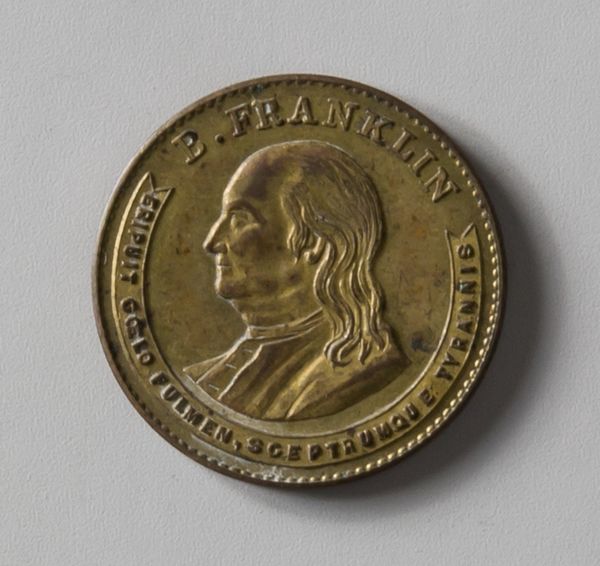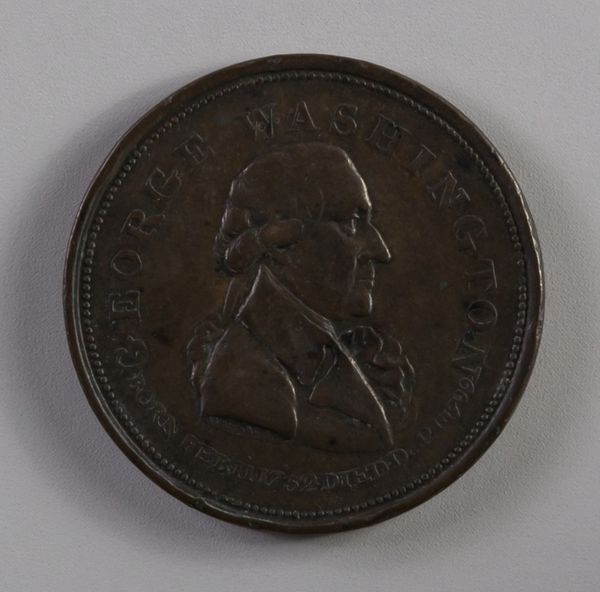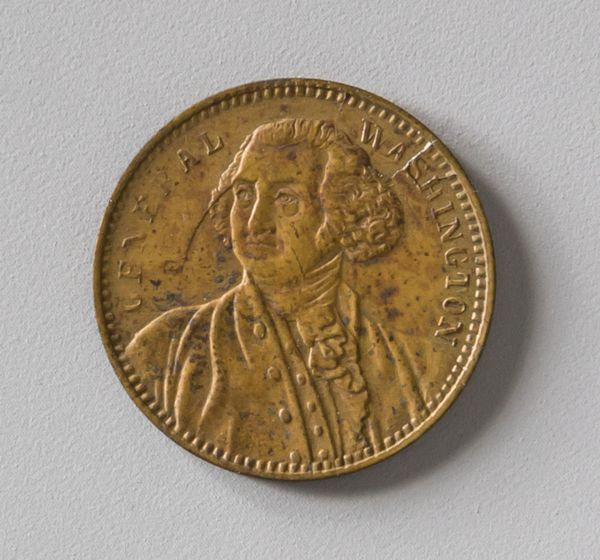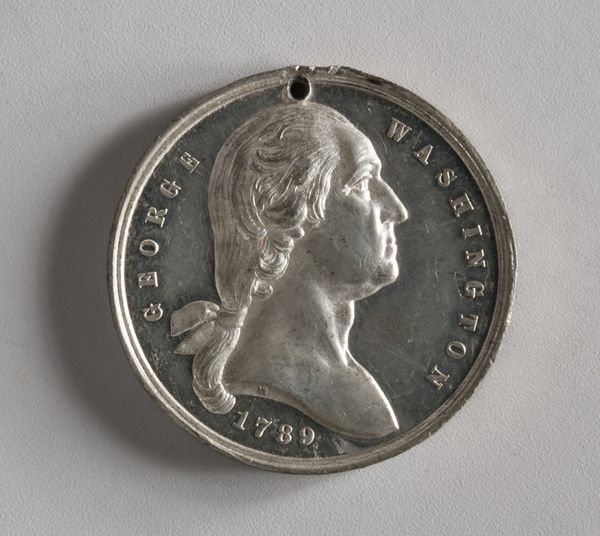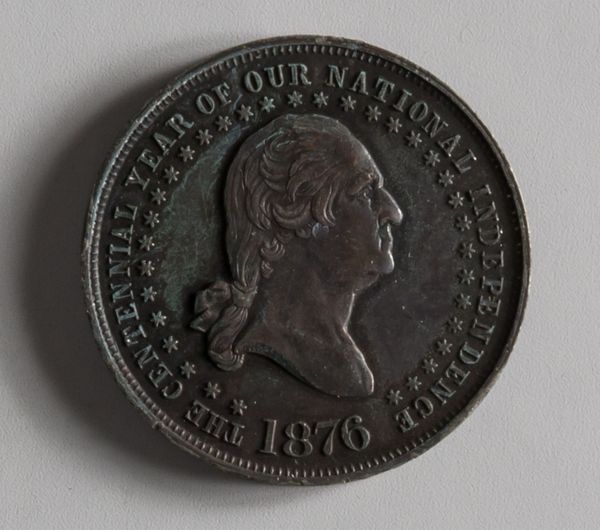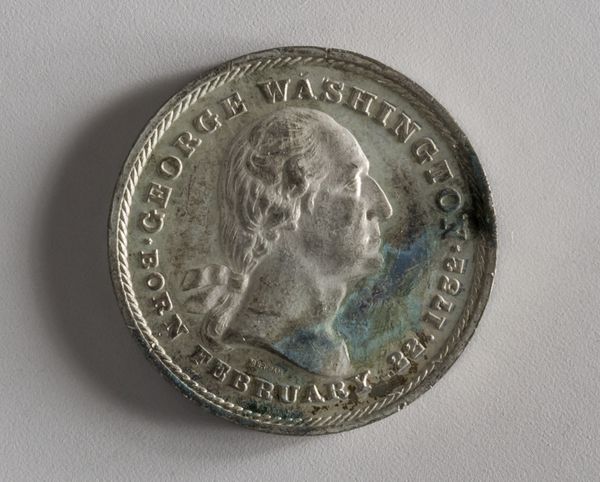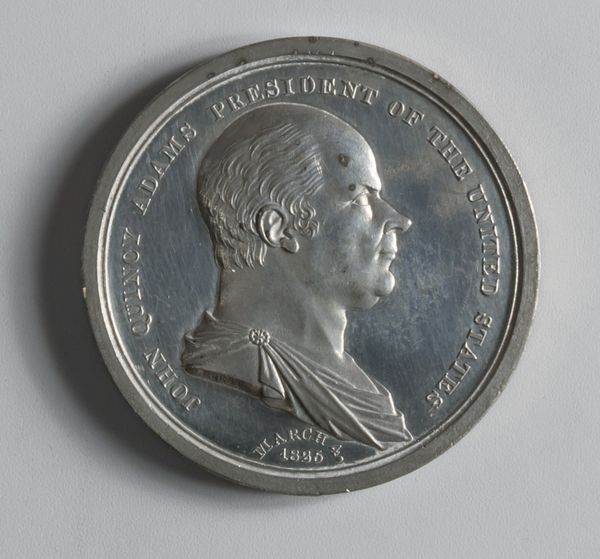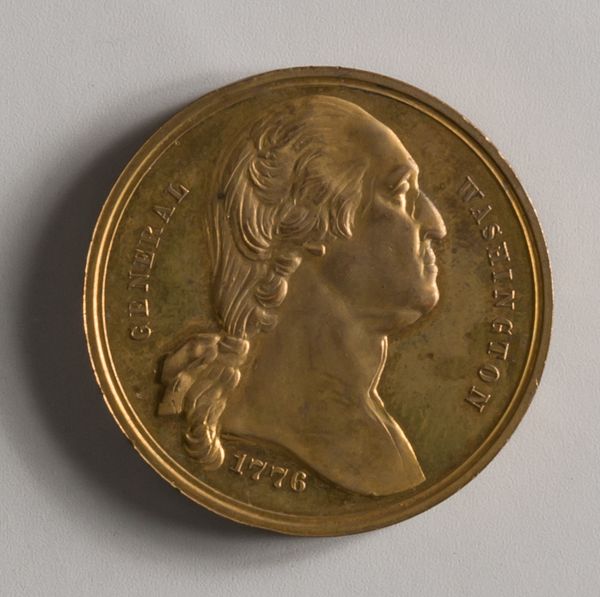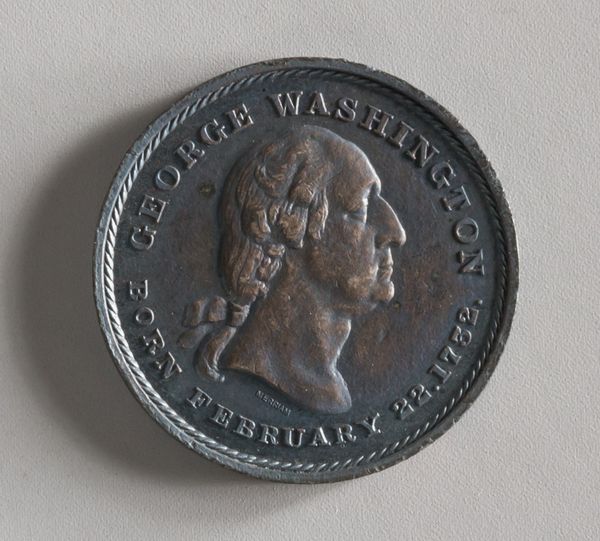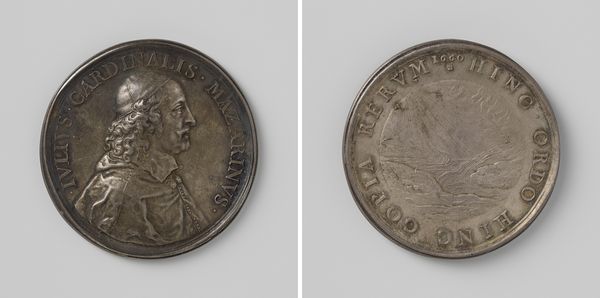
relief, bronze, sculpture
#
portrait
#
neoclassicism
#
sculpture
#
relief
#
bronze
#
sculpture
#
academic-art
#
profile
#
statue
Dimensions: Diam. 1 3/8 in. (3.5 cm)
Copyright: Public Domain
Curator: Look at this intriguing portrait relief, "Benjamin Franklin," created in bronze in 1859 by Joseph H. Merriam. It resides here at the Metropolitan Museum of Art. Editor: My first impression is the almost austere formality—the profile view, the cool, reflective surface of the bronze. It feels both commemorative and a bit...distant, don’t you think? Like Franklin as a symbol rather than a man. Curator: I see what you mean, it does possess that Neoclassical detachment, perhaps even more so because it’s a relief sculpture. It invites consideration of the "myth" of Franklin—the self-made man, the inventor—all while neatly bypassing the messier realities. Editor: Exactly. It’s almost currency-like, invoking power, authority, and permanence. The very medium – bronze – contributes to this, screaming legacy. But what legacy? The artist chooses to freeze him in this very specific light, and as a profile we see so little depth, hiding from anything beyond surface. It reflects the early history-makers controlling the narrative. Curator: Absolutely, and this piece appears rather late on, almost as a commentary on the romantic era... Merriam reduces Franklin to pure essence: the profile, the name, the date of birth. All enshrined in enduring metal. It makes me consider the different layers and perspectives one could use to engage with the Franklin "brand." Editor: Thinking about it in the current era, and understanding Franklin's complicated position on issues of race and equality makes viewing this seemingly simple portrait that much more complicated, in particular around memorializing certain figures. It makes me wonder how we re-evaluate the stories these monuments tell—who they include, who they erase, who benefits. Curator: Yes, a worthwhile and challenging contemplation on whose stories get told, how, and by whom. This "Benjamin Franklin" sculpture becomes more than just an object; it turns into a site of negotiation and even a spark for further, more thoughtful, critical investigation of our cultural inheritance.
Comments
No comments
Be the first to comment and join the conversation on the ultimate creative platform.
